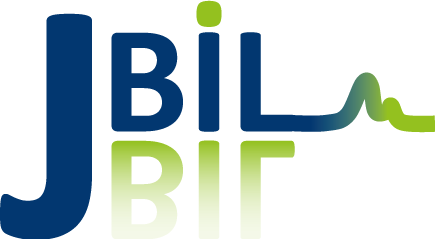- Raman-spectroscopic analysis of white blood cells
- Rapid identification and antibiotics susceptibility testing of bacterial pathogens
- Correlative Imaging for analysis of pathogen development in cells and tissue samples (under development)
- MALDI Imaging of human tumor tissues and tumor cells
- MALDI Imaging of fungal infections in human and murine tissue
- Analysis of MALDI Imaging data with adopted bioinformatics tools
Raman-spectroscopic analysis of white blood cells (WBC)
- Assessing molecular fingerprint of different leukocytes in a label-free manner
- Automated Raman imaging of WBC (Schie et al 2018)
- Automated sampling of individual cells based on recognition in bright field images
- 20000 cells in less than 4 h
Possible output data:
- Differential leukocyte count (Ramoji et al 2012, Schie et al 2018)
- Discrimination between normal leukocytes and circulating tumor cells (Schie et al 2018)
- Detection of inflammation / infection status
- Activation of CD4+ and CD8+ T cells (Ramoji et al 2019)
- Activation of TLR4 in monocyte-like cells (Töpfer et al 2019)
Sample Requirements:
- Isolated white blood cells (lysis of erythrocytes)
- Fixation in 4% formaldehyde
References
Schie et al, Anal. Chem. 2018, 90, 2023−2030
Ramoji et al, Anal. Chem. 2012, 84, 5335−5342
Ramoji et al, ImmunoHorizons 2019, 3 (2) 45-60
Töpfer et al, Integrative Biology, 2019, 11(3), 87–98
Rapid identification and antibiotic susceptibility testing of pathogens
- Raman spectroscopic diagnosis of underlying pathogens in infections and sepsis
- Concentration of pathogens using a dielectophoretic chip for faster analysis and better signal:noise ratio
- Detection of antibiotic susceptibility and minimal inhibitory concentration (MIC) by using parallelized dielectrophoretic chips for parallel testing of different antibiotics simultaneously at various concentrations
- Measurement in solution (e.g. pathogens transferred from a urine sample to growth medium) (Schröder et al 2017) or on dried pathogens (Assmann et al 2015)
- Total test duration 2-4 h depending on type of sample and pathogen
Possible output data:
- Identification of pathogen species (Schröder et al 2015a)
- Antibiotic susceptibility profile (Schröder et al 2017, Assmann et al 2015, Schröder et al 2015b)
- Minimal inhibitory concentration of selected antibiotics (Kirchhoff et al 2018)
Sample Requirements:
- 4-10 ml of urine sample, processing instructions for samples from other body fluids are currently being developed
References
Schröder et al, J. Biophotonics 2017, 1–11
Assman et al, Anal. Bioanal. Chem. 2015, 407:8343–8352
Schröder et al, Biomicrofluidics 2015a, 9(4):044118
Schröder et al, Sci. Rep. 2015b, 5:8217
Kirchhoff et al, Anal. Chem. 2018, 90, 1811−1818
Correlative Imaging for analysis of pathogen development in cells and tissue samples
The JBIL is currently developing assays for correlative imaging of pathogens and infection/inflammation markers using MALDI imaging, Raman microspectroscopy, (non-linear) fluorescence microscopy and classical tissue analysis (e.g. HE staining, electron microscopy). Research focus is on the analysis of intracellular infections ( Große et al 2015) and the detection of pathogens in tissue samples. We are happy to discuss your specific question in this field and adopt our assay systems for your purpose.
References
Große et al, Anal Chem. 2015, 87(4):2137-42
MALDI Mass Spectrometric Imaging (MALDI MSI) of human tumor tissues and tumor cells
- Imaging of lipids, metabolites and proteins (native or tryptic digested)
- Spatial resolved analysis at a pixel resolution of 100 – 30µm
Possible output data:
- Identification of proteomic markers (Hoffmann et al 2018)
- 3D Imaging (Lotz et al 2018 )
Sample Requirements:
- Snap frozen cryo tissue
- FFPE tissue
- Fixed cells
General References for MALDi Imaging
Hoffman et al Proteomics Clin Appl.2019 Jan;13(1)
Lotz, Hoffmann et al Biochim Biophys Acta Proteins Proteom. 2017 Jul;1865(7):946-956
Urbanek et al Anal Bioanal Chem. 2016 May;408(14):3769-81
Ernst et al. Head Neck. 2015 Jul;37(7):1014-21
Alexandrov et al. J Cancer Res Clin Oncol. 2013 Jan;139(1):85-95
MALDI Mass Spectrometric Imaging (MALDI MSI) of fungal infections in human and murine tissue
- Imaging of lipids, metabolites and proteins (native or tryptic digested)
- Identification of pathogens
- Spatial resolved analysis at a pixel resolution of 100 – 30µm
Possible output data:
- Identification of proteomic markers (Hoffmann et al 2018)
- 3D Imaging (Lotz et al 2018 )
Sample Requirements:
- Snap frozen cryo tissue
- FFPE tissue
- Fixed cells
General References for MALDi Imaging
Hoffman et al Proteomics Clin Appl.2019 Jan;13(1)
Lotz, Hoffmann et al Biochim Biophys Acta Proteins Proteom. 2017 Jul;1865(7):946-956
Urbanek et al Anal Bioanal Chem. 2016 May;408(14):3769-81
Ernst et al. Head Neck. 2015 Jul;37(7):1014-21
Alexandrov et al. J Cancer Res Clin Oncol. 2013 Jan;139(1):85-95
Analysis of MALDI Imaging data with adopted bioinformatics tools
- Data evaluation with SCiLS Lab
- Application of deep learning algorithms (in cooperation)
General References for MALDi Imaging
Hoffman et al Proteomics Clin Appl.2019 Jan;13(1)
Lotz, Hoffmann et al Biochim Biophys Acta Proteins Proteom. 2017 Jul;1865(7):946-956
Urbanek et al Anal Bioanal Chem. 2016 May;408(14):3769-81
Ernst et al. Head Neck. 2015 Jul;37(7):1014-21
Alexandrov et al. J Cancer Res Clin Oncol. 2013 Jan;139(1):85-95
